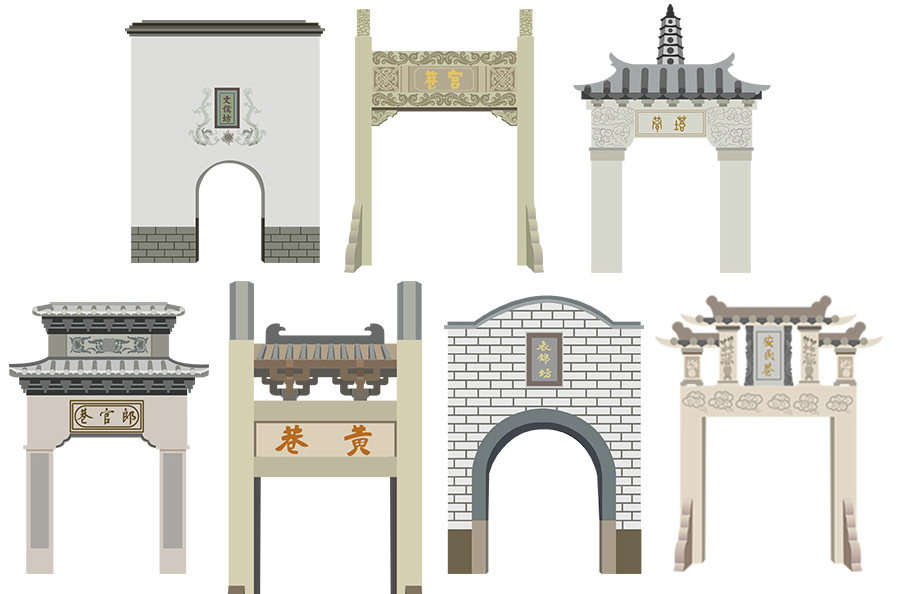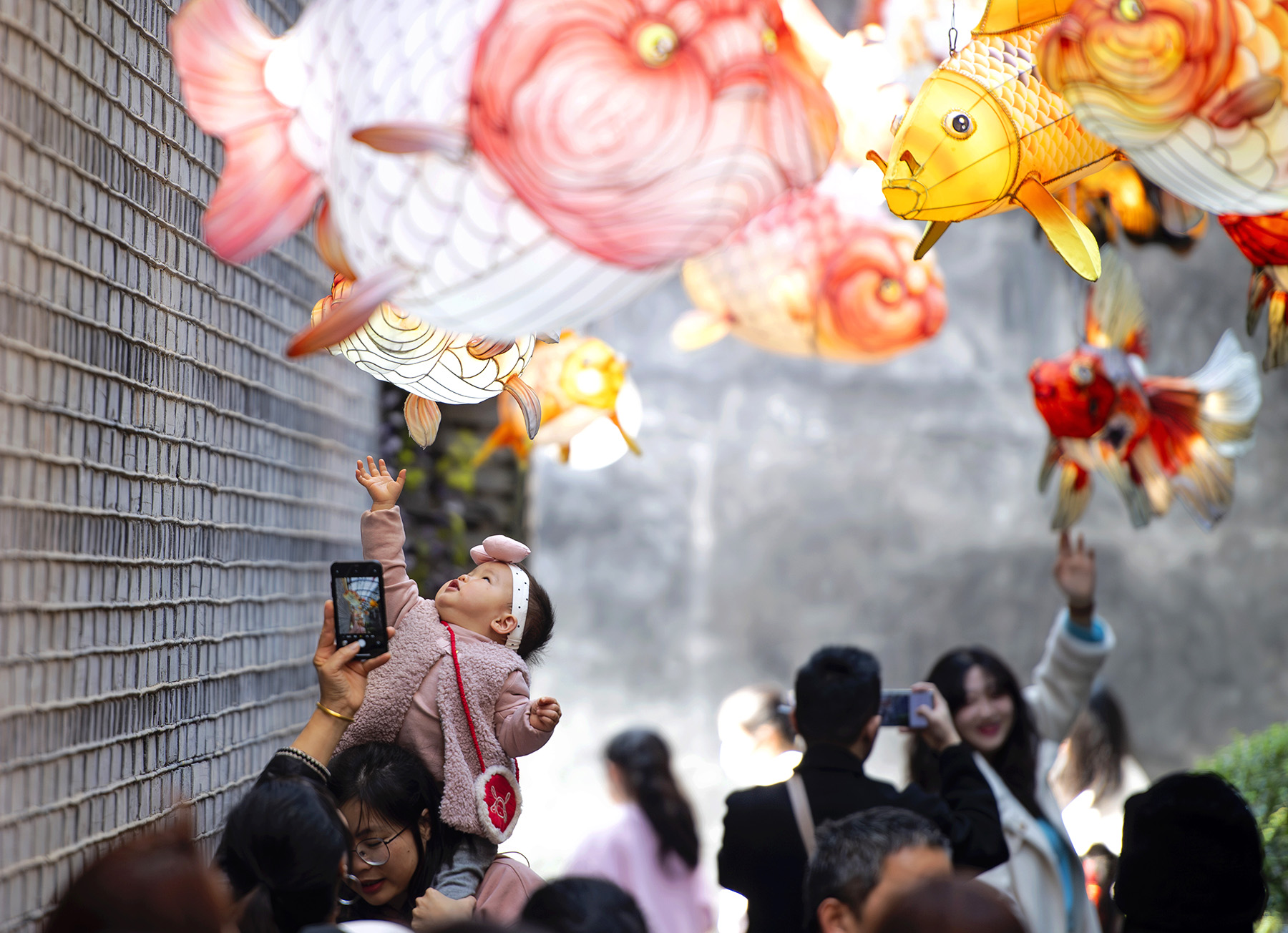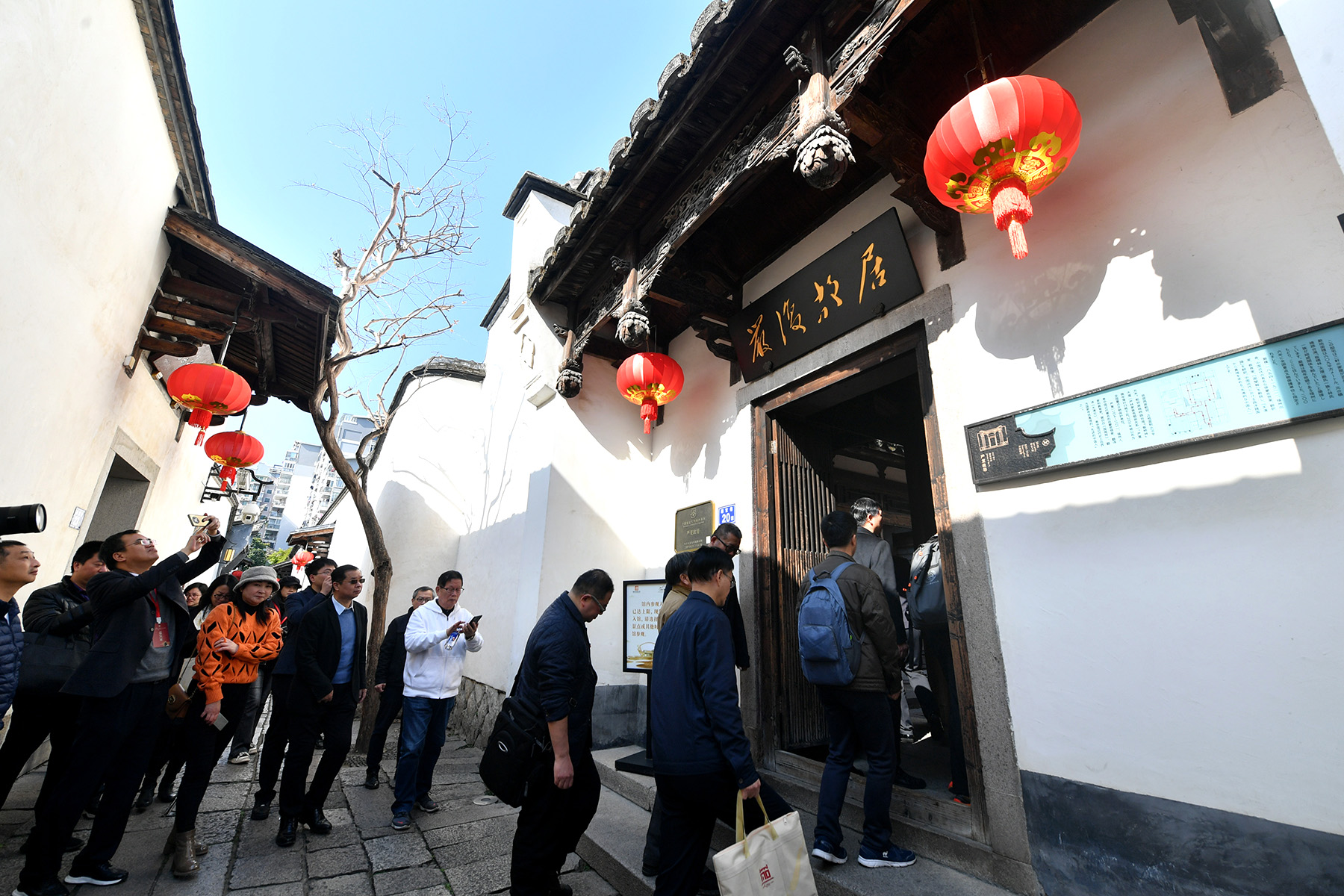
We had to pilot our drone carefully to avoid a midair collision with a parrot.
Our film crew had already paid to fix the machine after thwacking it into the top of an archway the day before we encountered a man taking his parrot for a fly, much like others would take a dog for a walk.
As you do, I guess.
Our cameraman told him that he was worried about hitting the bird, pointing out our drone was "almost certainly more expensive "than the animal. "Impossible!" the guy replied. "The bird is definitely worth more!"
It was one of the last things I'd expected to encounter as host of a documentary exploring Fuzhou's Sanfang Qixiang (Three Lanes and Seven Alleys) neighborhood.
READ MORE: Fuzhou sets example in preserving past
But, as I discovered, the 40-hectare community of roughly 200 ancient residences is home to many surprises.
I didn't anticipate that I'd use mallets to pound pork on tree stumps, or strum a sanxian (three-stringed lute with a snakeskin sound box) on a traditional opera stage, let alone befriend the relative of a man who incinerated more than 1,000 metric tons of opium 200 years ago.
I began by visiting an old restaurant where the owner taught me to make rouyan, dumplings stuffed and wrapped with pork.
That is, dollops of minced pork sheathed in hunks of pork pounded into strips.

This local delicacy, which translates as "meat swallow" — a reference to the bird — dates back 140 years to Qing Dynasty (1644-1911) Emperor Guangxu, my host explained.
He recounted its history as we thwacked pork atop a polished tree stump with mallets for 20 minutes until the meat was just a few millimeters thick, causing my palms to tingle and eventually go numb.
He later invited me to serve the ones I'd made to customers, whose raised eyebrows revealed they hadn't expected a blonde-haired, blue-eyed waiter to be carrying steaming bowls of their order to their table.
Indeed, not only every dish, but every eatery in Sanfang Qixiang has a story, as one person I met during my visit told me.
More storied, however, are the roughly 80 ancient dwellings. Larger-than-life historical figures lived in these large historical manors, endowing this tiny community with an outsized impact on this vast nation.
Perhaps most preeminent among these is the rented residence where national hero Lin Zexu was born into poverty in 1785 and spent the first 20 years of his life.
Lin served as an official in 14 provinces and is still a household name for publicly burning 1.18 million kilograms of opium that British traders had smuggled into China in the early 1800s.
As rain tip-tapped on the courtyard's black ceramic shingles, I sipped Fujian's well-known rock tea with Lin's sixth-generation descendant, an affable elderly woman named Lin Zhuguang, with whom I've since kept in touch by WeChat.
Lin Zexu is arguably Sanfang Qixiang's most acclaimed native, but by no means its only celebrated resident.

Among the dozens of others are Tang Dynasty (618-907) librarian and Confucian scholar Huang Pu; Qingera physician Zhu Tianzhang, governor-general of Jiangsu, Anhui and Jiangxi provinces Liang Zhangju, who also undertook efforts to eliminate opium trafficking, and Shen Baozhen, who played a vital role in modern shipbuilding, shipping and maritime development in China; as well as local Minju Opera performer Zheng Yizou (1903-93).
Pagodas, temples, archways and other public structures are also tucked among these private residences.
Today, Sanfang Qixiang is a 5A tourism site — the highest national designation — and on China's tentative list seeking UNESCO World Heritage Site status. It was first built during the Jin Dynasty (265-420) and continuously added to and renovated since.
It's hailed as a "living museum of Ming (1368-1644) and Qing architecture".
ALSO READ: A sea change for abalone
But, it was slated for demolition in the 1990s, after the land was sold to real estate developers, until President Xi Jinping, then secretary of the Fuzhou Municipal Committee of the Communist Party of China, intervened to save the neighborhood from the wrecking ball. Fuzhou's old buildings have been given a new lease on life, thanks to this and subsequent preservation efforts.
The historical figures who once occupied these dwellings no longer live here — but their stories do.
Their homes now literally house the past. And they remind us how it shapes the cultural future of not just Fuzhou, but all of China — and, ultimately, the heritage that inhabits not only this community but also the world we all share.
Visitors to this ancient network of streets will discover that they are home to both local and universal legacies, and are an excellent place to get lost in time.


